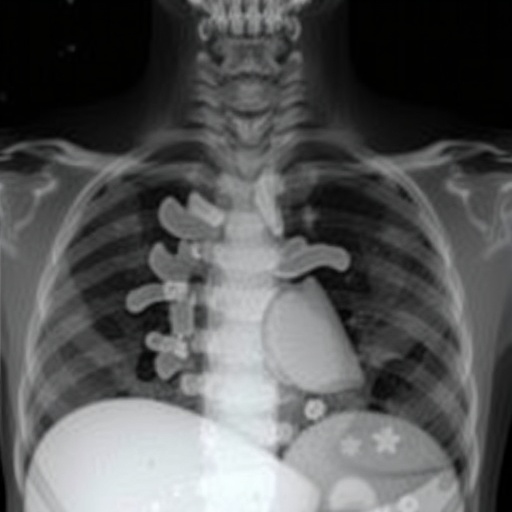The analysis of immune cells infiltrating cerebrospinal fluid enables the characterization of the tumor microenvironment in brain metastases

Credit: VHIO
- The analysis of immune cells infiltrating cerebrospinal fluid enables the characterization of the tumor microenvironment in brain metastases.
- Findings reported today in Nature Communications* confirm that these cells recapitulate the characteristics of those detected in brain metastases, and could act as novel and non-invasive biomarkers to predict patient responsiveness to immune-based therapies.
Results from a study led by Joan Seoane, Director of Preclinical and Translational Research co-program at VHIO and ICREA Professor, show that immune cells accessing cerebrospinal fluid faithfully recapitulate the characteristics of cells identified in brain metastasis, and could therefore constitute novel biomarkers of response to immune-based therapies.
Immune checkpoint inhibitors including anti-PD1, anti-PD-L1, and anti-CTLA4, have shown significant clinical benefits in patients with progressive or metastatic solid tumors, including some brain metastasis. Notably, these immune-based therapies have improved outcomes for some of those suffering from lung cancer and melanoma. Together, these tumor types (represent between 30-40% of all cancers), along with breast cancer, are three common malignancies that lead to brain metastases.
“One of the major challenges in improving outcomes for patients suffering from brain metastases caused by these cancers is that new lesions can differ immensely from the primary tumor, and thus respond in a different way to immune-based therapies,” observes Joan Seoane, co-Corresponding Author of this present study that published today in Nature Communications*.
Brain metastases are the most frequent tumor of the brain, with a dismal prognosis. While a fraction of patients benefit from treatment with immune checkpoint inhibitors, the majority do not. To predict response to these therapies necessitates the characterization of tumor specimens. Due to the anatomical location of brain tumors and the risk of surgical procedures, accessing samples from brain malignancies is challenging.
Results from previous studies** led by Joan Seoane, as well as those of other groups, have evidenced that cerebrospinal fluid can provide vital insights into the genomic characteristics of brain tumors and therefore be used as a minimally invasive liquid biopsy. Spurred by these findings, the investigators conducted this present research to establish whether they could effectively characterize the immunological phenotype through the analysis of cerebrospinal fluid.
To test this hypothesis, Joan Seoane’s team analyzed samples from 48 patients with brain metastasis. These samples were obtained thanks to the generosity of patients receiving treatment at our Vall d’Hebron University Hospital (HUVH), as well as the Hospital Clínic in Barcelona, who gave their full consent to use their samples. The collection of samples was possible thanks to the dedication and expertise of these hospitals’ Neurosurgery Services.
The researchers assessed the immune cells present in the brain metastases, and in parallel, performed immune cell profiling of the cerebrospinal fluid. They sought to identify which cell types were present in the cerebrospinal fluid and compare them with those obtained from the metastatic lesions.
“By establishing similarities between the two, we have identified a novel and minimally invasive method that can allow us to predict response to immunotherapy in these patients. This pioneering approach could more precisely guide clinical decision making in treating these patients with immune-based therapeutic strategies,” adds Joan Seoane.
By analyzing cerebrospinal fluid, Joan Seoane’s team have been able to identify the T-cells that recognize the tumor, and those that are active in treatment. “Each immune T-cell has a unique sequence that recognizes a particular tumor antigen. When their tracing and targeting commence, these cells are activated and begin to proliferate. Through this study, we have been able to characterize the individual sequences of immune cells and, in this way, identify which immune cells are fighting the tumor and discern how they evolve over time,” continues Joan Seoane.
The study was also carried out in collaboration with colleagues at the National Centre for Genomic Analysis-Centre for Genomic Regulation (CNAG-CRG), Barcelona. Directed by Holger Heyn, Head of CNAG-CRG’s Single Cell Genomics Team, theu performed single cell transcriptome sequencing of around 6000 cells by scRNA-seq technology.
“Single cell transcriptome sequencing provides the highest resolution for the detection and monitoring of several different diseases. The identification of clonal T-cells in both metastasis and liquid biopsy is of particular interest. We have shown that the sequencing of T-cell receptors provides a cellular barcode that can be assessed outside of the tumor. Importantly, this approach opens up new avenues for the detection of systemic disease,” concludes Holger Heyn, co-Corresponding Author of this present study.
###
This research was supported thanks to the funding received from the Spanish Association against Cancer (AECC), the Sociedad Española de Loterías y Apuestas del Estado (SELAE), and counted on the participation of the VHIO-BBVA Comprehensive Program of Cancer Immunotherapy & Immunology (CAIMI), financed by the BBVA Foundation.
For more information please contact Amanda Wren, Head of the Director’s Office and Global Communications, Vall d´Hebron Institute of Oncology (VHIO), Tel: +34 69520788, Email: [email protected].
References:
*Carlota Rubio-Perez, Ester Planas-Rigol, Juan L. Trincado, Ester Bonfill-Teixidor, Alexandra Arias, Domenica Marchese, Catia Moutinho, Garazi Serna, Leire Pedrosa, Raffaella Iurlaro, Francisco Martínez-Ricarte, Laura Escudero, Esteban Cordero, Marta Cicuendez, Sara Ruiz, Genís Parra, Paolo Nuciforo, Josep Gonzalez, Estela Pineda, Juan Sahuquillo, Josep Tabernero, Holger Heyn, Joan Seoane. Immune cell profiling of the cerebrospinal fluid enables the characterization of the brain metastasis microenvironment. Nat. Commun. 2020. DOI: 10.1038/s41467-021-21789-x.
**Escudero L, Llort A, Arias A, Diaz-Navarro A, Martínez-Ricarte F, Rubio-Perez C, Mayor R, Caratú G, Martínez-Sáez E, Vázquez-Méndez É, Lesende-Rodríguez I, Hladun R, Gros L, Ramón y Cajal S, Poca M, Puente X, Sahuquillo J, Gallego S, Seoane J. Circulating tumour DNA from the cerebrospinal fluid allows the characterisation and monitoring of medulloblastoma. Nat Commun. 2020; 11(1):5376.
***Seoane J, De Mattos-Arruda L, Le Rhun E, Bardelli A, Weller M. Cerebrospinal fluid cell-free tumour DNA as a liquid biopsy for primary brain tumours and brain metastases. Ann. Oncol. 2019; 30(2):211-218.
Media Contact
Amanda Wren
[email protected]
Related Journal Article
http://dx.





